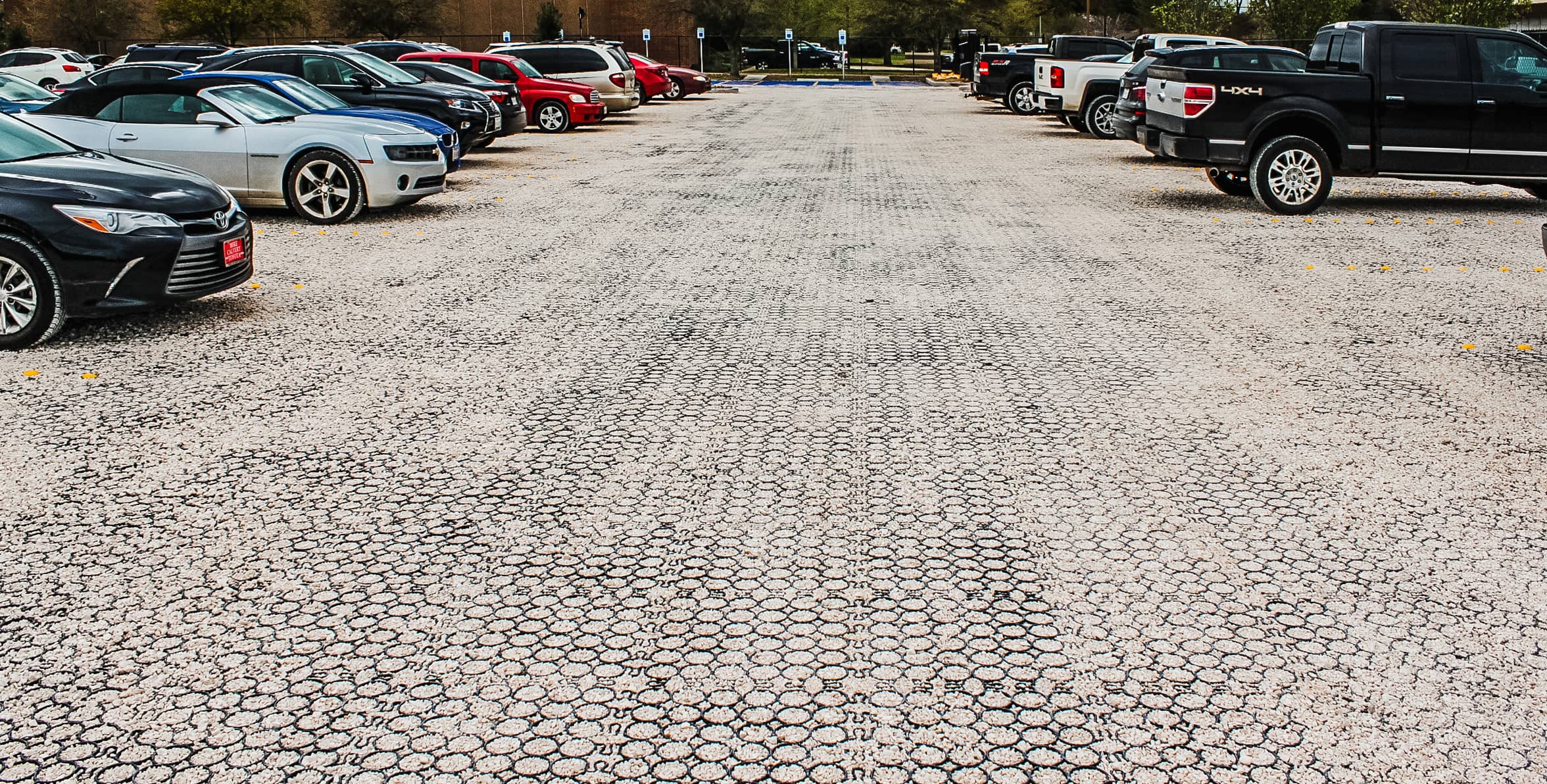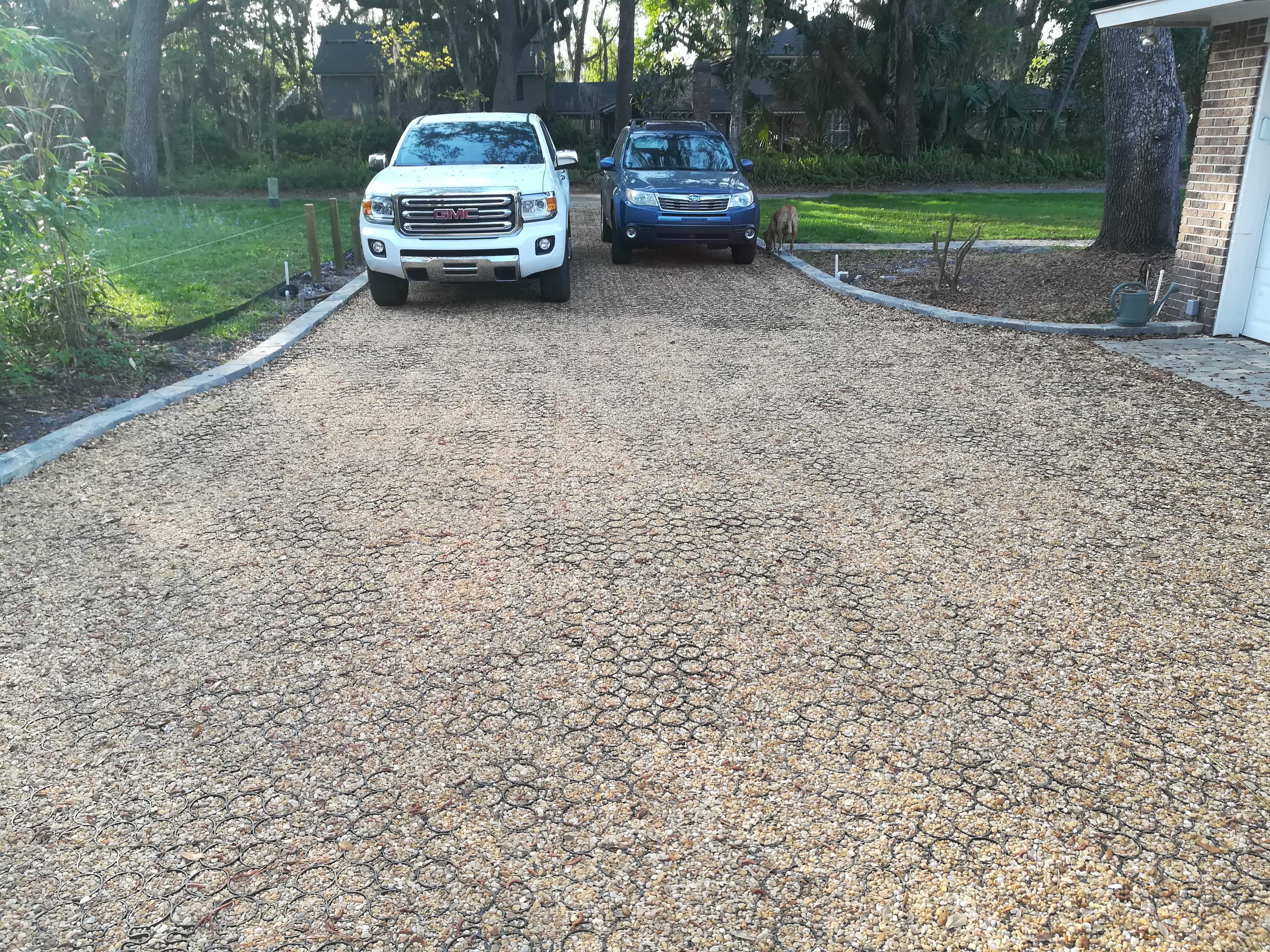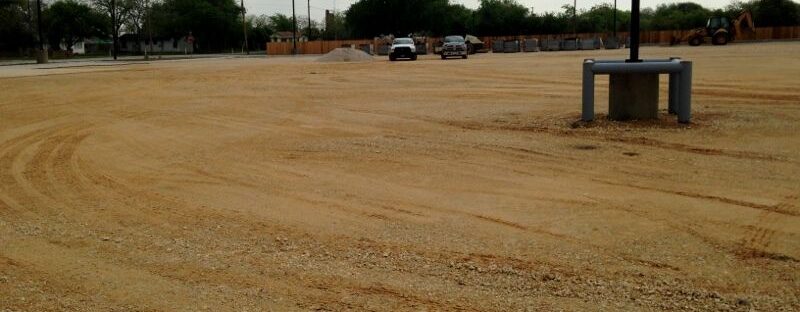
Residential curb appeal starts at ground level. Driveways no longer exist to simply connect the street to a garage—they’re now a visible part of the home’s exterior identity. A thoughtful layout paired with durable materials can produce a modern driveway design that balances architecture, function, and sustainability.
How Today’s Homeowners Are Rethinking Driveway Expectations
The role of a driveway has expanded far beyond its traditional scope. Older materials like poured concrete and asphalt were often chosen for speed and familiarity, but these surfaces crack, stain, and degrade quickly under seasonal stress or poor drainage.
Today’s homeowners increasingly prioritize systems that offer long-term reliability with minimal upkeep. Rather than treating driveways as expendable, they’re investing in surfaces that support structure, water control, and consistent visual appeal over time.
Why Low-Maintenance Surfaces Deliver Better Long-Term Value
A high-performing driveway reduces ongoing work and protects surrounding areas. While traditional gravel can appear practical, it often shifts out of place or wears unevenly, demanding constant raking or repair.
Permeable systems offer a more stable solution by handling runoff and reinforcing materials from below. Water passes through instead of pooling, erosion is minimized, and no sealing or drainage hardware is required. These systems offer performance with less intervention, making them a practical foundation for any modern driveway design that prioritizes resilience and simplicity.
Grid Foundations Before Gravel Fill

A partially completed installation reveals the layered strategy behind a stabilized surface. Border stones define the space, while visible grid cells await a gravel fill. The interlocking system prevents material displacement and distributes load evenly across the entire drive.
Finished Surface with Stabilized Gravel

A finished version of the same concept shows gravel seated flush within the structure. The result is clean, stable, and resistant to ruts or washouts. Instead of scattering under pressure, the gravel remains locked in, even during turning or acceleration.
Parallel Paver Strips Over Gravel Base

One home features twin concrete strips over a gravel bed, forming vehicle tracks flanked by landscaping. This minimalist layout reduces material use and impervious surface while reinforcing the home’s geometry. Drainage is handled naturally in the spaces between.
TRUEGRID Cells Shown Over Turf

A hand-held TRUEGRID module offers a glimpse into the system’s hidden support. These snap-fit grids reinforce gravel, grass, or other materials, providing permeability and structure in one solution. That support keeps the surface looking clean over time.
Light Gravel with Framed Walking Path

Another installation shows stepping stones inset beside a gravel surface. The path controls foot traffic while introducing rhythm and contrast. Though the material looks informal, a grid system beneath ensures durability and structure beneath every step.
Concrete Arc with Crushed Granite Surround

This layout combines form and function: a curved concrete pad supports a vehicle, surrounded by stabilized crushed granite. The arc resists stress in key load areas, while the perimeter material maintains even grade and permeability across the site.
Grid-Filled Cells Supporting Loose Stone

A detailed view shows loose stone captured within circular cells. No gravel spills beyond the boundary. Instead of relying on compaction, the engineered structure maintains alignment and integrity across the full span of the driveway.
The Technical Role of Permeability in Surface Design
Permeable systems do more than shed water—they help reintroduce it to the ground below. Driveways built with these bases retain and filter water, reducing the burden on city drains and lowering erosion risks in nearby landscapes.
This approach to modern driveway design improves durability and supports sustainability. It also reduces the use of heat-retaining materials and supports code compliance where stormwater management is required.
Reinforced Layouts That Reduce Gravel Loss
Gravel migration and surface wear are common with unstabilized systems. Modular grid designs prevent displacement by physically locking aggregate in place—a structural advantage often overlooked in modern driveway design.
Light gravel blends remain smooth and walkable, and integrated pavers guide movement across the space. Unlike conventional loose-fill solutions, these stabilized layouts remain intact and level over time, even at high-use points.
Drainage That Works Without Visible Infrastructure
By absorbing water into the subgrade, stabilized drives eliminate the need for open drains or trenching. Expansion, freeze-thaw cycles, and saturated soils are all handled by the grid’s internal structure without cracking or washout.
This makes them especially valuable for projects with limited slope or natural features to preserve. Trees, ground cover, and adjacent plantings stay protected because moisture and air can still reach critical root systems.
Environmental Benefits of TRUEGRID Systems
TRUEGRID systems go beyond drainage—they contribute meaningfully to sustainable site development.
- TRUEGRID surfaces help reduce heat island effects by keeping surface temperatures closer to ambient ground conditions. Or, in the case of grass infill, the air can be degrees cooler through transpiration.
- The carbon footprint of production is another advantage. Every paver is made using 100% post-consumer recycled HDPE, eliminating the majority of emissions associated virgin plastic or cement manufacturing.
- These systems also help manage both water volume and quality by filtering pollutants into the subgrade, preventing oil, animal waste, debris, and heavy metals from reaching storm drains.
- In established landscapes, modular grids help preserve vegetation and tree roots. Products like ROOT allow oxygen and moisture to reach below the surface without compacting soil or damaging growth zones.
Finally, each TRUEGRID component is recyclable at end-of-life, closing the materials loop and minimizing long-term waste generation.
Tailoring TRUEGRID Solutions to Your Driveway Needs
Installers can adapt layout and fill choices to match any residential need. Curves, decorative insets, and mixed turf or stone styles all remain structurally sound within the grid system. The recycled base supports long-term function without added load on the surface.
TRUEGRID offers solutions matched to load level and surface use.
- PRO LITE works well for typical residential vehicles in drives and for walkways.
- PRO PLUS handles heavier vehicles and more frequent use.
- ROOT allows turf stabilization, for light-duty vehicles, in areas where green space and function must overlap.
All three systems are built from 100% recycled HDPE, supporting both durability and environmental responsibility.
Long-Term Performance of TRUEGRID Driveways
For those interested in real-world options, low-maintenance driveway solutions demonstrate how these systems perform in varied conditions and budgets. Optimizing for water use, durability, or layout, stabilized gravel and turf systems let homeowners shape both the look and function of a modern driveway.
- Modular surfaces don’t wear unevenly or split under pressure.
- Stabilized grids distribute weight across the entire layout and resist damage from moisture, UV, or seasonal stress.
- Refill and repair cycles are practically non-existent or significantly reduced compared to traditional options.
TRUEGRID’s modular paver systems are designed specifically for residential needs and offer customizable approaches for driveways, walkways, and vehicle-ready surfaces.
Design Better Driveways with TrueGrid’s Residential Surface Systems
Homeowners and contractors alike are turning to modular paver systems that prioritize sustainability and long-term reliability. TrueGrid offers a range of surface solutions engineered to meet modern residential needs without compromising appearance or performance. Contact us today for more information.



